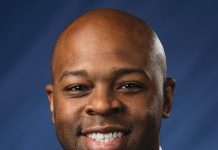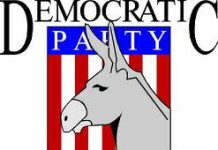By Lesley Weidenbener
TheStatehouseFile.com
Lesley Weidenbener, managing editor, TheStatehouseFile.com
INDIANAPOLIS – The message that Indiana Public Access Counselor Luke Britt sent in his commentary last week about a State Board of Education dispute is more important than his actual ruling.
![]() In an advisory opinion, Britt said he could not rule “definitely†that education board members broke the state’s Open Door Law when they signed and sent a letter to legislative leaders requesting asking them to get involved in A-F grading for schools.
In an advisory opinion, Britt said he could not rule “definitely†that education board members broke the state’s Open Door Law when they signed and sent a letter to legislative leaders requesting asking them to get involved in A-F grading for schools.
So that’s a win for those board members and a loss for Indiana Superintendent of Public Instruction Glenda Ritz, who chairs the board and yet didn’t know anything about the action other members were taking.
But at this point, with A-F grades on the verge being finalized, the ruling is all but perfunctory.
Britt’s larger message, though, is far from it.
“Final decisions are meant to be open and transparent,†Britt wrote in an unusual commentary that followed his advisory opinion.
Essentially, Britt said the education board might not have broken the letter of the law. But it sure teetered on the edge of its spirit.
The point of the law is to make sure that the public knows what a government agency or board is doing. That’s it. The goal is simple. The law requires boards and commissions and councils to take all actions in meetings that are announced to the public and follow published agendas.
There are a few exceptions. Boards can have private discussions about economic development, legal issues, personnel issues and a few other things. But all official action must take place in public. Period.
And Britt warned public officials that it’s a law that should be followed.
“I encourage all public agencies to be especially attentive to the purpose of public access laws to avoid ambiguous situations and arousing suspicions of prohibited activities,†Britt wrote. “Regardless of the intent, the appearance of action taken which is hidden from public view is particularly damaging to the integrity of a public agency and contrary to the purposes of transparency and open access.â€
In the education board case, email made it possible for a majority of the board members – basically everybody except Ritz – to sign off on a letter requesting action from legislative leaders without ever meeting in public, Britt said. That’s because state law exempts email from a ban on so-called serial meetings in which officials meet in small groups to come to a consensus without ever making a quorum for action, he asid.
It also appears from Britt’s ruling that another reason the education board action may not have broken the law is because the group’s staff – at the Center for Education and Career Innovation – wrote the letter and circulated it. It’s not clear who directed the staff to do so. But Britt said that if a majority of the board had directed the staff to write the letter outside a public meeting, a violation of the law would have occurred.
(On a side note, that certainly raises questions about how much authority the Center for Education and Career Innovation has in setting or establishing policy.)
What this analysis says to me is that the education board’s actions fall through the cracks of the Open Door Law – intentionally or not. And now that the board has exposed those gaps, they’re available to any government council or commission that wants to exploit them.
Britt suggests in his opinion that lawmakers take a look at whether an email chain among board or council members should be considered a public meeting or a serial meeting and require public notice or other treatment.
I hope lawmakers will go a step further and look at the entire situation. Technology is changing how people – including public officials – communicate, and lawmakers have tried to keep up. But the law deserves another look in light of recent actions to see if there are yet more changes that will keep the public business in the public eye.
Lesley Weidenbener is executive editor of TheStatehouseFile.com, a news website powered by Franklin College journalism students.






Analysis: Shes on the square on the mark with this article,and opinion.
Technology is changing,or “has changed”,the things of concern in the public eye so to speak trending shows these become more obvious as science applies the methods and functions of ones chosen communication and informational devices.
This isn’t a crack in the door,or even a gap. Orbital,and cloud science applications now make this an planet wide “expanding tectonic crevasse.”
Sometimes the technologies available today do now identify what has been poked in the eye of the public,by putting that said methodology under an eye of the public.
Technology today works in all dimensions. Our countries freedoms and inalienable rights,and the law should learn to adapt with that,in the presence of those minds addressed, while amending of the before mentioned rights.
“Nothing is more destructive of respect for the government,and the law of the land,than passing laws which cannot be enforced.” ( Albert Einstein 1951/ad.)
Comments are closed.